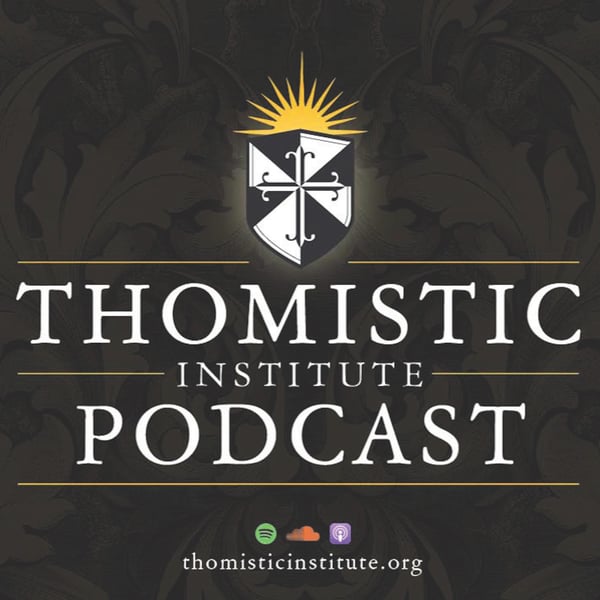St. Thomas’s Eucharistic Devotion | Prof. Joshua Revelle
The Thomistic Institute
The Thomistic Institute
4.8 • 729 Ratings
🗓️ 24 March 2022
⏱️ 65 minutes
🧾️ Download transcript
Summary
This talk was given on October 10, 2021 at St. Joseph's Retreat Center as part of "Prayer in the Thought of St. Thomas Aquinas: A Weekend Intellectual Retreat." For more information on upcoming events, please visit our website at www.thomisticinstitute.org. About the speaker: Joshua Revelle is an adjunct instructor at Mount Saint Mary College, with a PhD in Spirituality from The Catholic University of America. His areas of specialization are dogmatic and spiritual theology, especially in St. Thomas Aquinas. He also enjoys teaching Biblical theology. His research and teaching are geared toward the integration of theory and practice.
Transcript
Click on a timestamp to play from that location
| 0:00.0 | This talk is brought to you by the Thomistic Institute. |
| 0:03.5 | For more talks like this, visit us at tamistic institute.org. |
| 0:11.9 | So St. Thomas Aquinas' earliest, or most important, biographer William of Tocco, writes about our saint. |
| 0:19.6 | He was especially devout towards the most holy sacrament of the |
| 0:23.7 | altar, about which, since it had been granted to him to write more profoundly, so it was given to him |
| 0:30.6 | to celebrate more devoutly. For every day he used to say one mass, and also hear another. Moreover, he had become accustomed rather |
| 0:40.1 | frequently to be wrapped at mass by such a great affection of devotion that he would be |
| 0:46.3 | completely bathed in tears. But the way that most Catholics today know about St. Thomas' |
| 0:52.2 | Eucharistic devotion is not through the early |
| 0:55.7 | biographies of his life, but through the hymns that he composed for the office of Corpus Christi. |
| 1:01.9 | So just a brief history of this feast. In 1209, St. Juliana of Lige had a series of visions of |
| 1:07.7 | the moon with a piece missing. And after praying to understand what these |
| 1:13.0 | visions meant, the Lord explained to her, and this is a quotation from the Vita Juliana, |
| 1:18.9 | the moon represented the church. But the dark area at the edge intimated that a feast day was |
| 1:25.7 | still missing, one which he, meaning the Lord, wished to see celebrated by all the faithful. |
| 1:33.1 | It was his will that the institution of the most holy sacrament receive its own proper celebration. |
| 1:40.5 | Then, ultimately, in 1264, Pope Urban IV inaugurated the feast of Corpus Christi for the Universal Church. |
| 1:47.6 | And what is most important for our purposes is that Pope Urban entrusted St. Thomas Aquinas with writing the office for the feast, which he did, including all of the hymns. |
| 1:58.5 | And many practicing Catholics today know by heart, O Salvataris Hossea and |
| 2:03.7 | Tantam Erigo Sacramentum, which are the concluding stanzas of the hymns that he composed for |
| 2:09.1 | lods and vespers for the feast. And so St. Thomas Aquinas' thought about the Eucharist is |
| 2:14.6 | extremely important, not only because of its significance or Catholic |
... |
Transcript will be available on the free plan in -1102 days. Upgrade to see the full transcript now.
Disclaimer: The podcast and artwork embedded on this page are from The Thomistic Institute, and are the property of its owner and not affiliated with or endorsed by Tapesearch.
Generated transcripts are the property of The Thomistic Institute and are distributed freely under the Fair Use doctrine. Transcripts generated by Tapesearch are not guaranteed to be accurate.
Copyright © Tapesearch 2025.

